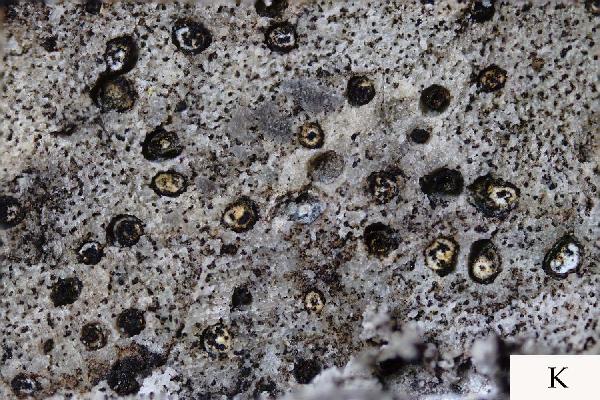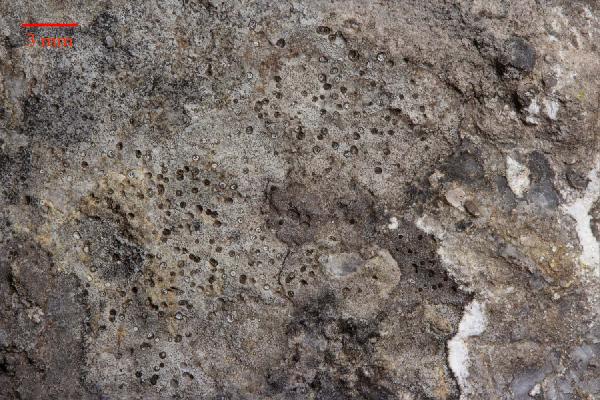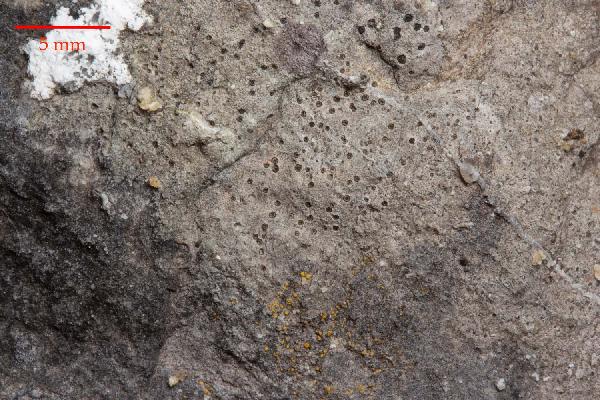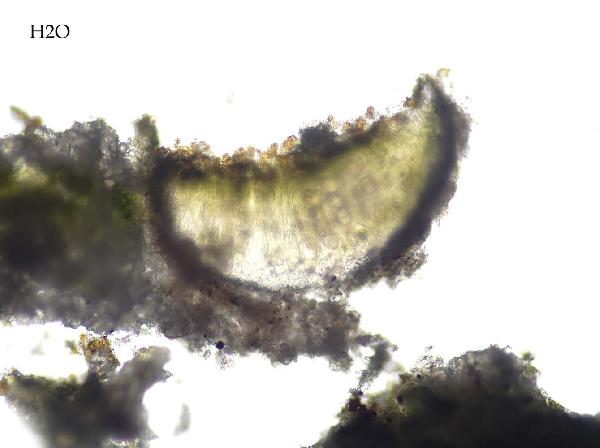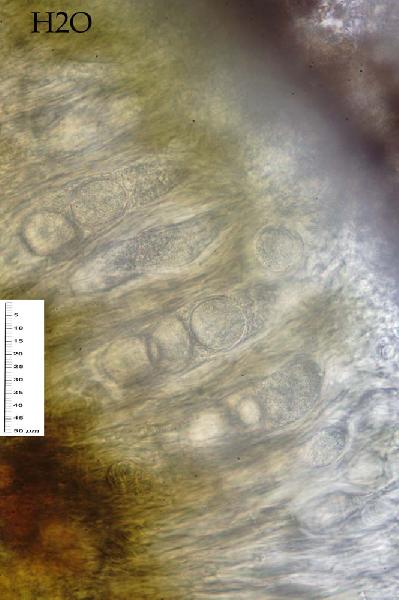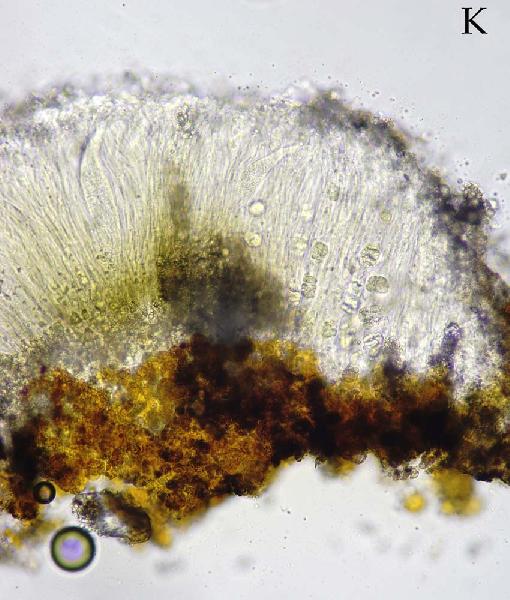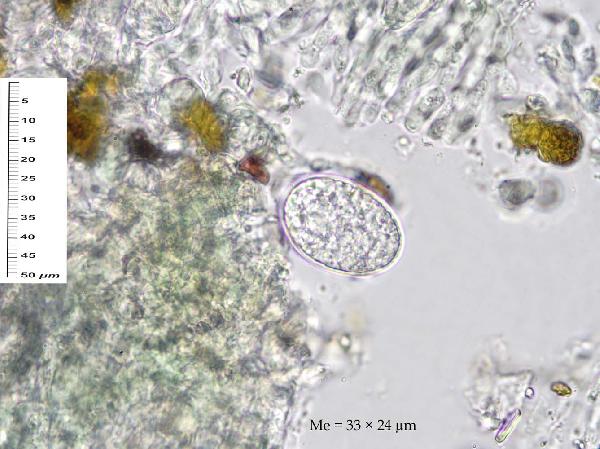Circinaria coronata (A. Massal.)
Provisionally placed here, ICN Art. 36.1b.. Basionym: Pachyospora coronata A. Massal. - Mem. Lichenogr.: 131, 1853.
Synonyms: Aspicilia calcarea var. coronata (A. Massal.) Körb.; Aspicilia coronata (A. Massal.) B. de Lesd.; Aspicilia coronata var. petkae (Servít) Szatala?; Aspicilia laurensii B. de Lesd.; Lecanora coronata (A. Massal.) Jatta; Lecanora coronuligera Zahlbr.; Lecanora laurensii (B. de Lesd.) Croz.
Distribution: N - Ven (Caniglia & al. 1993, Lazzarin 2000b), Lomb (Gheza & al. 2023). C - Tosc, Marc (Nimis & Tretiach 1999), Umb (Nimis & Tretiach 1999, Panfili 2000, Ravera & al. 2006), Laz (Nimis & Tretiach 2004), Abr (Nimis & Tretiach 1999), Mol (Nimis & Tretiach 1999, Caporale & al. 2008, Genovesi & Ravera 2014), Sar. S - Camp (Garofalo & al. 1999, 2010, Aprile & al. 2003b, Nimis & Tretiach 2004), Pugl (Nimis & Tretiach 1999), Bas (Nimis & Tretiach 1999), Cal (Puntillo 1996), Si (Nimis & al. 1996b).
Description: Thallus crustose, endosubstratic or thinly episubstratic, continuous to finely rimose around the apothecia, grey-white to pale yellowish green, dull, N+ green. Medulla white, I-. Apothecia aspicilioid, 0.2-0.5 mm across, usually immersed in pits of the rock, round to strongly irregular in outline, with a black, but usually densely white-pruinose, concave to flat disc and a thin, slightly raised, white thalline margin. Proper exciple poorly developed, colourless; epithecium olive green to olive-brown, with crystals, N+ emerald green, K+ brownish; hymenium colourless, I+ blue partly turning yellow-green; paraphyses sparingly branched and anastomosing, 1.5-2 µm thick at mid-level, submoniliform in upper part, the uppermost cells subglobose, up to 6 µm wide; hypothecium colourless. Asci (2-)4(-6)-spored, cylindrical-clavate. Ascospores 1-celled, hyaline, broadly ellipsoid to subglobose, 18-34 x 13-28 µm. Pycnidia rare, immersed, with a black, punctiform ostiole. Conidia filiform, straight or slightly curved, 6-11 µm long. Photobiont chlorococcoid. Spot tests: cortex and medulla K-, C-, KC-, P-. Chemistry: aspicilin. Note: related to C. contorta, but with an endolithic to hemiendolithic thallus, this is a mainly southern lichen in Europe, most common on hard dolomite. In Italy it is most frequent in upland areas, especially in the South. According to Nordin (in litt.) the taxon is heterogeneous and more species might be involved.
Growth form: Crustose endolithic
Substrata: rocks
Photobiont: green algae other than Trentepohlia
Reproductive strategy: mainly sexual
Commonnes-rarity: (info)
Alpine belt: rare
Subalpine belt: rather rare
Oromediterranean belt: rather common
Montane belt: common
Submediterranean belt: very rare
Padanian area: absent
Humid submediterranean belt: very rare
Humid mediterranean belt: absent
Dry mediterranean belt: absent

Predictive model
Herbarium samples


P.L. Nimis; Owner: Department of Life Sciences, University of Trieste
Herbarium: TSB (16406)
2001/11/22

Courtesy Danièle et Olivier Gonnet - Source: https://www.afl-lichenologie.fr/Photos_AFL/Photos_AFL_A/Textes_A4/Aspicilia_coronata.htm
France, Salignac-Eyvigues - (24) - route vers Barbeyroux, près de Bourzolles, alt. 200 m
18/03/2015

Courtesy Danièle et Olivier Gonnet - Source: https://www.afl-lichenologie.fr/Photos_AFL/Photos_AFL_A/Textes_A4/Aspicilia_coronata.htm
France, Salignac-Eyvigues - (24) - route vers Barbeyroux, près de Bourzolles, alt. 200 m
18/03/2015
Growth form: Crustose endolithic
Substrata: rocks
Photobiont: green algae other than Trentepohlia
Reproductive strategy: mainly sexual
Commonnes-rarity: (info)
Alpine belt: rare
Subalpine belt: rather rare
Oromediterranean belt: rather common
Montane belt: common
Submediterranean belt: very rare
Padanian area: absent
Humid submediterranean belt: very rare
Humid mediterranean belt: absent
Dry mediterranean belt: absent

Predictive model
| Herbarium samples |


P.L. Nimis; Owner: Department of Life Sciences, University of Trieste
Herbarium: TSB (16406)
2001/11/22

Courtesy Danièle et Olivier Gonnet - Source: https://www.afl-lichenologie.fr/Photos_AFL/Photos_AFL_A/Textes_A4/Aspicilia_coronata.htm
France, Salignac-Eyvigues - (24) - route vers Barbeyroux, près de Bourzolles, alt. 200 m
18/03/2015

 DOLICHENS
DOLICHENS





